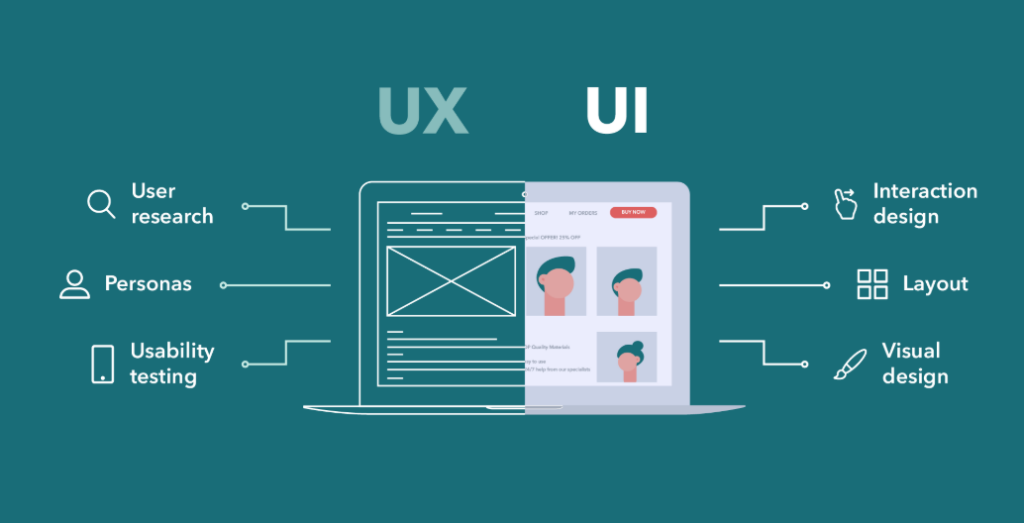In a digital landscape where users interact with websites on various devices, responsive design has become an essential skill for front-end developers. From enhancing user experience to improving website rankings, responsive design ensures that websites function seamlessly across all screen sizes. This skill is not just a competitive edge—it’s a necessity.
What is Responsive Design?
Responsive design refers to the practice of creating websites that adapt their layout and content to fit different screen sizes and orientations. By leveraging flexible grids, media queries, and scalable images, developers ensure that users enjoy a consistent experience, whether they are on a smartphone, tablet, or desktop.
In today’s world, where mobile usage dominates, the importance of responsive design cannot be overstated. In fact, Google’s mobile-first indexing prioritizes responsive websites, making this skill critical for front-end developers who want their projects to succeed.
“Good design is as little design as possible.” – Dieter Rams
Why Responsive Design Skills Matter
1. Enhanced User Experience (UX)

A responsive website provides users with an intuitive and enjoyable experience, regardless of their device. From readable fonts to touch-friendly buttons, every element must adapt seamlessly.
“Design is not just what it looks like and feels like. Design is how it works.” – Steve Jobs
2. SEO Advantages
Responsive design contributes to higher search engine rankings. Google prefers mobile-friendly websites, making responsiveness a significant factor in SEO. This boosts visibility, driving more organic traffic to websites.
For developers working on multiple projects, tools like project management software can streamline the responsive design process. Learn more about this in this guide on project management tools for front-end development projects.
3. Adaptability for Diverse User Needs
With a responsive website, you cater to users across various devices and platforms. Whether your audience prefers browsing on a 4-inch smartphone or a 15-inch laptop, your website remains functional and appealing.
Core Skills for Mastering Responsive Design
To excel in responsive design, developers need to focus on specific skills and tools:
1. CSS Media Queries
Media queries enable developers to apply CSS styles based on device characteristics like screen width, resolution, and orientation. This flexibility is the backbone of responsive design.
2. Fluid Grids and Flexible Layouts
Fluid grids use relative units like percentages, allowing layouts to resize proportionally to the screen. Frameworks like Bootstrap and Tailwind CSS simplify creating flexible designs.
3. Scalable Typography and Adaptive Images
Modern CSS techniques like the clamp() function allow developers to create responsive typography. Similarly, the srcset attribute ensures images adapt to different resolutions and bandwidths.
Overcoming Challenges in Responsive Design
Responsive design is not without its challenges. Common obstacles include:
- Cross-Browser Compatibility: Ensuring designs render correctly on different browsers.
- Performance Optimization: Balancing responsive elements without slowing down the site.
- Device Testing: Testing websites on a variety of devices to guarantee functionality.
Using tools like BrowserStack for cross-browser testing and optimizing image sizes can help address these issues.
The Role of Responsive Design in Freelance and Full-Time Development
Responsive design is crucial for both freelance and full-time developers. Freelancers often juggle diverse client needs, requiring them to adapt designs for varying requirements. In contrast, full-time developers may focus on maintaining consistency across a single brand.
For a deeper dive into the differences between these roles, explore this comparison of freelance vs. full-time development.
Client Expectations in Responsive Design
Clients increasingly expect responsive designs because they directly impact business success. A well-designed responsive website attracts more users, improves conversions, and enhances customer satisfaction.
When hiring developers, businesses often prioritize portfolios that showcase responsive work. For tips on filtering and screening proposals effectively, check out this guide.
Responsive Design: A Future-Ready Skill

As technology evolves, so do the requirements for responsive design. Emerging trends include:
- Mobile-First Design: Prioritizing mobile layouts during the design process.
- CSS Grid Layouts: Creating more complex and versatile layouts.
- Variable Fonts: Enhancing typography scalability across devices.
“The future belongs to those who prepare for it today.” – Malcolm X
The importance of responsive design skills in front-end development cannot be overstated. They enable developers to create websites that cater to diverse user needs, enhance SEO performance, and meet client expectations. Whether you’re working as a freelancer or within a larger team, mastering responsive design is a key step toward delivering exceptional projects.
As the web continues to evolve, developers must adapt and embrace new techniques. By honing your responsive design skills, you’re not just creating better websites—you’re shaping the future of the digital experience.









